Art World
It’s Not All in Your Head—the Art World Really Is Unfair. Here Are 9 Reasons Why
The wealthy and powerful run the show. Colonialism casts a long shadow. The art market is supremely opaque. Shall we go on?
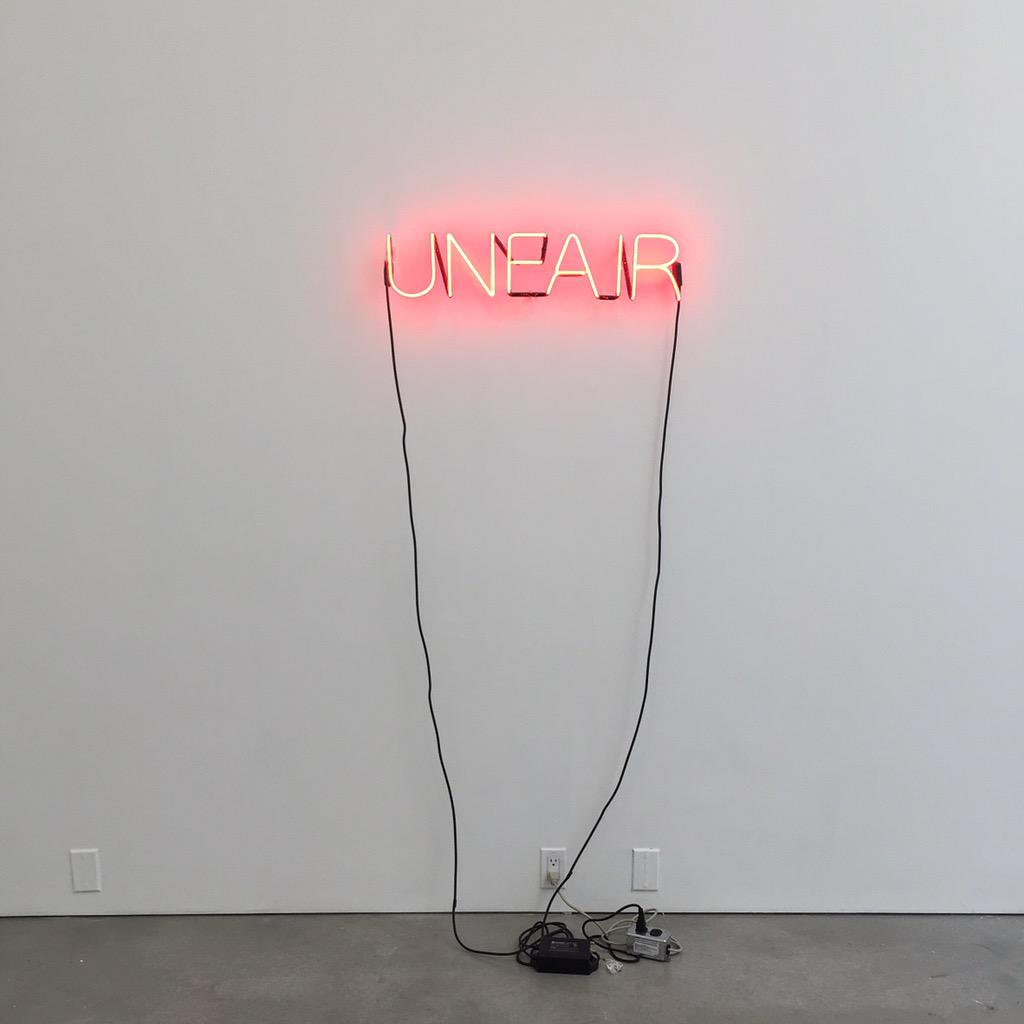
If you’re in the art world, you’re here for a reason. You believe artists have a unique perspective to offer the world; you find museums to be treasure troves of artifacts of the greatest of human efforts. But we all know that the art world doesn’t offer a level playing field. While it may think of itself as enlightened, the art industry tends to reproduce the same inequities that we see in any other field.
The wealthy and powerful run the show. Aspiring art collectors find themselves shut out of the market. Colonialism casts a long shadow, with artists from formerly colonized countries still underperforming their Western counterparts in market terms. Art schools charge astronomical tuition and don’t offer any practical teaching.
These are just some of the many reasons that the artists, dealers, gallery and fair directors, and art educators we surveyed said the art world was unfair. (To speak frankly, most of them asked to remain anonymous.) Below, we rounded up their answers.
1. Sellers Profit When They Sell Works at Auction, and Artists Don’t (at Least in Most of the United States)
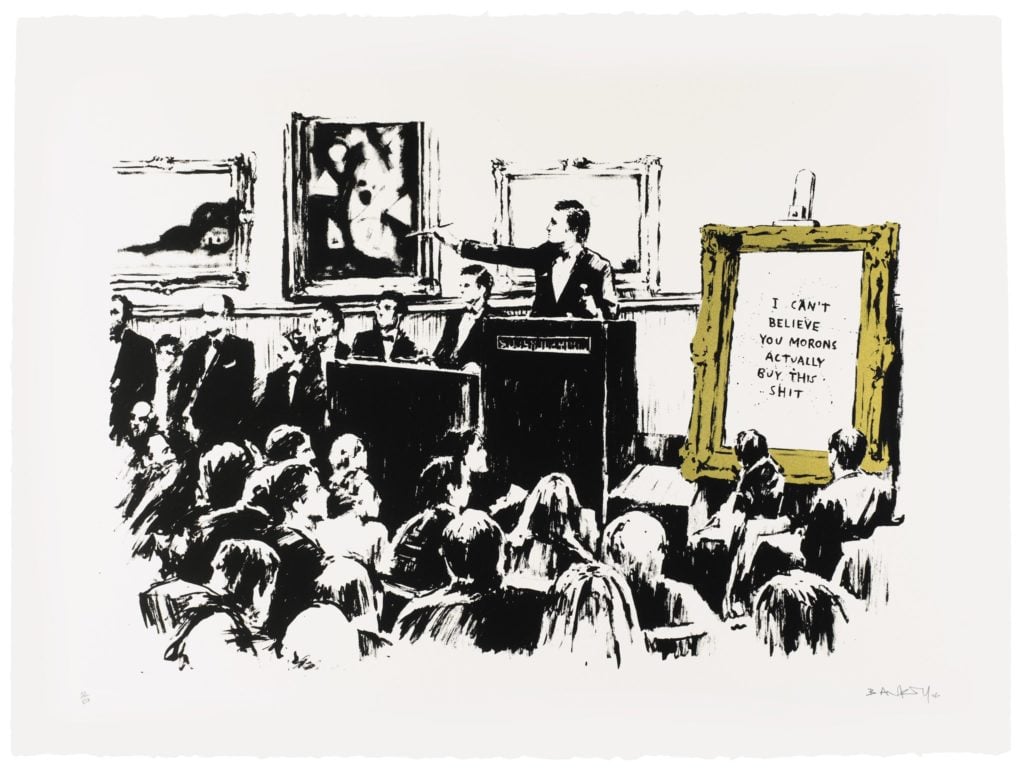
Banksy, I Can’t Believe You Morons Actually Buy This Shit (2014). Courtesy of Sotheby’s.
This one has been a raw nerve for a long time.
The art world has long debated whether artists ought to get a royalty when buyers profit from the resale of their work. Back in 1973, Robert Rauschenberg shoved Robert Scull after the taxi magnate made a huge profit by auctioning off his work at Sotheby’s Parke-Bernet. Scull paid just $900 for Thaw (1958) in the late 1950s; he offloaded it for $85,000 in 1973. “I’ve been working my ass off for you to make that profit,” Rauschenberg said. (There’s a postscript, as Art Market Monitor has reported, but that’s another story.)
People complaining about this situation have called for a federal resale-royalty right in the US, in which artists would get a percentage of the proceeds. (Such laws are already on the books in California and in parts of Europe.) They say that writers and other creative people get royalties when their work sells well, so why shouldn’t they?
2. Speculators Can Ruin an Artist’s Market
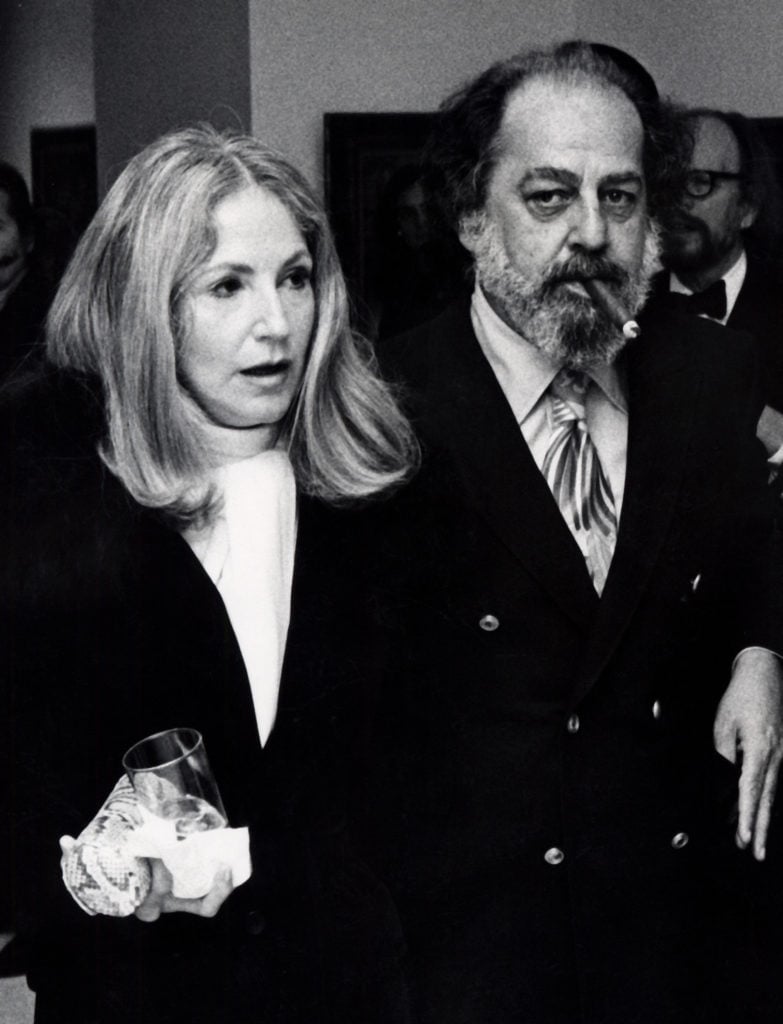
Ethel Scull and Robert Scull. Photo by Ron Galella/Ron Galella Collection/Getty Images.
Possibly even worse for artists and their dealers: if their work scores big at auction, it can actually have disastrous results.
“You can’t stop a 34-year-old artist’s work coming to auction and the price going skyward,” says a dealer. “Then, you can’t stop the prices from crashing down when the speculators move on. Heaven forbid the artist does a body of work that’s slightly different, and people don’t understand it and so they don’t like it.
“Ross Bleckner is an excellent example,” the dealer goes on. “His primary market is okay, but his work doesn’t trade at prices anywhere near those of his contemporaries. His market went up in the ‘80s and then collapsed at the end of the bull run.”
Bleckner’s auction high, achieved at Christie’s New York in 2006, is $192,000, and only about a dozen works have sold in the six figures. Eric Fischl’s auction high, meanwhile, is $1.9 million, set at the same house in the same year; David Salle’s record is $795,000, set at Christie’s London in 2017.
For more recent history, just ask some of the stars of the Zombie Formalism movement, like Lucien Smith, Parker Ito, and Ryan Sullivan, whose prices and auction presence have gone down and stayed down since the heady days of the early 2010s.
3. You Need Family Connections to Make It
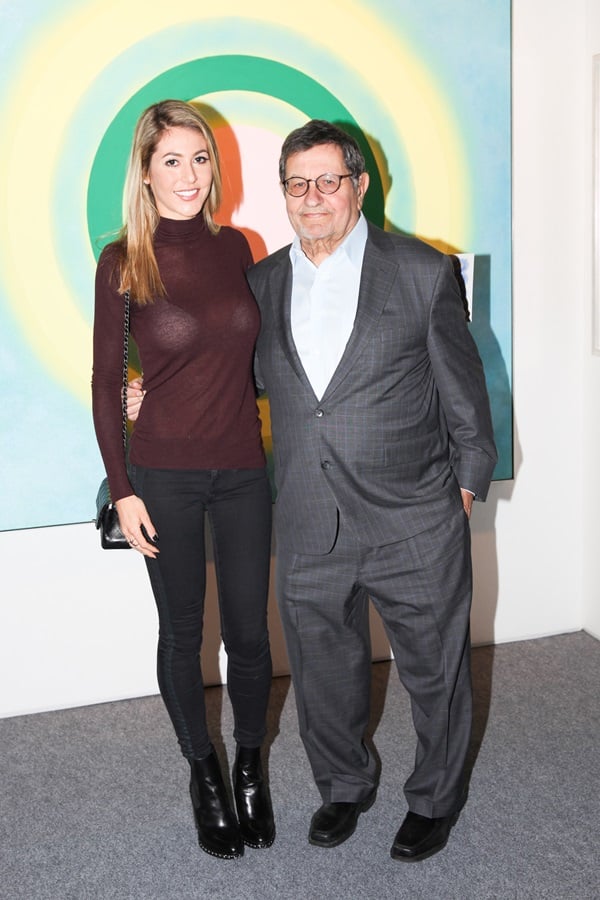
Martin Margulies and his daughter, Elizabeth. Photo: Angela Pham/BFA
There may be plenty of progressive-minded people in the art world, but if your heels are worn down and your coat is frayed, you may find certain doors are closed to you.
“It’s supposedly so democratic and open to people but in reality it’s cliquish and elitist, so it’s impossible for many people to gain access,” said a gallery director. Echoing her sentiments, her boss, the gallery principal, added, “You never really escape your parents’ level of status, do you? You are who your parents are.”
Adds an artist-educator, “Getting a job in the art world is much easier if you already come from the ruling class and have family connections, speak three languages, and feel comfortable ordering subordinates around while making polite conversation with curators, collectors, and celebrities.
“It’s much easier to succeed in almost every role if you can subsidize your own participation, from $140,000 Columbia tuition to entry-level gallery jobs that pay $30,000,” says the artist-educator.
4. Colonization Casts an Enormous Shadow
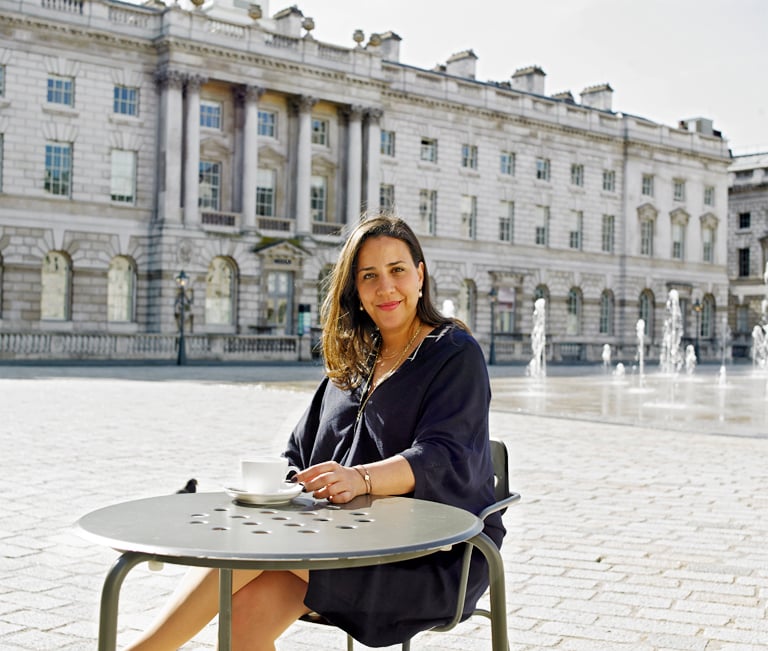
Touria El Glaoui. Photo Victoria Birkinshaw.
The art world is just one part of a larger system that disadvantages populations that have long been exploited on a global scale, points out one art fair founder.
“Founded on—and playing a significant role in—colonial, capitalist, and patriarchal structures, the art world undoubtedly favors those from particular demographics with influential networks and financial wealth,” said Touria El Glaoui, founder of the 1-54 Contemporary African Art Fair.
“Anyone without these privileges is faced with an unjust and steep battle for recognition, opportunities, and stability. 1-54 was initiated in response to these disparities, providing a much deserved and overdue platform for artists from Africa and its diaspora. Although inequalities in the art world are slowly being eroded, they need to continue to be challenged and dismantled to create a space that works for all.”
5. Art Schools Are Part of the Problem
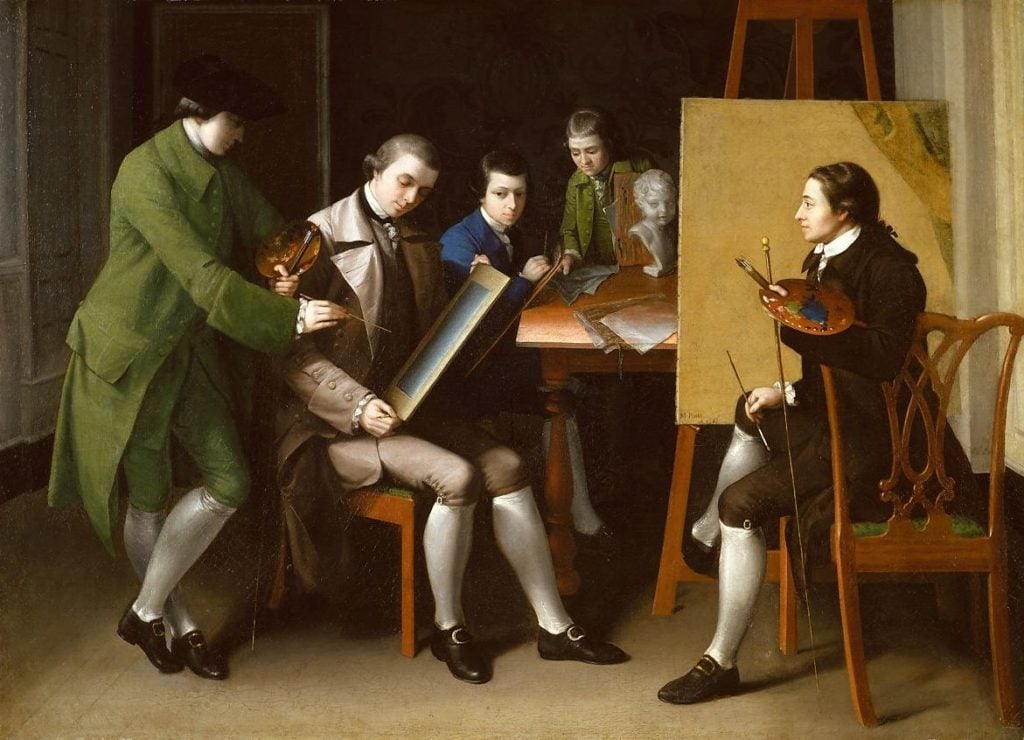
Matthew Pratt, The American School (1765).
Intergenerational resentment is simmering in the art academy, just as it is in the rest of the world.
“Baby boomer full-time faculty have no idea what the contemporary job market or economy are like, and they give completely useless advice that has no basis in any reality that’s existed for at least 25 years,” says one artist-educator. “And they earn twice as much as the millennial faculty who actually know what’s going on socially and culturally, even though the millennials are in catastrophic debt.”
And the only ones not going into debt for art school, adds an art fair director, are the privileged, because “art schools are so expensive that they are only drawing the children of privileged families, who went to private schools, because art-education budgets in public schools have been zeroed out.”
Another artist-educator sees a different problem: “The basic model for art schools is to train 100 students, [from which] one artist will employ the other 99.”
6. Museums Are Also Part of the Problem
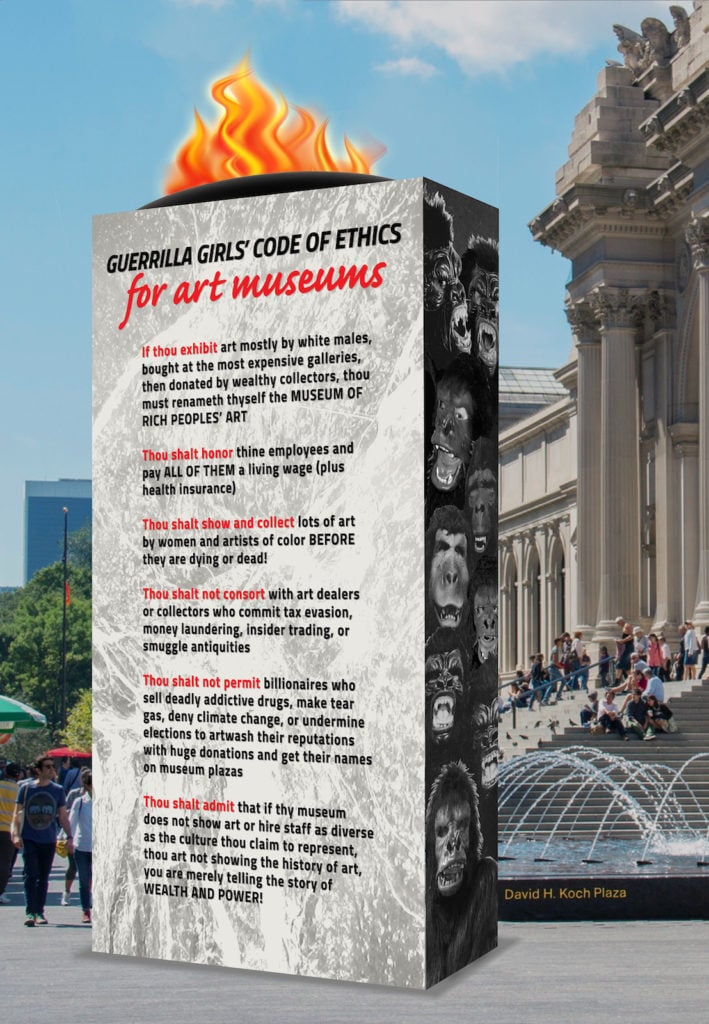
Guerrilla Girls, Guerrilla Girls’ Code of Ethics for Art Museums Monument, 2019. Courtesy Guerrilla Girls.
One of the most significant developments in the art world this year was the vociferous protest over the Whitney Museum of American Art’s board co-chair, Warren Kanders, who owns a company that makes weapons that have been used on protesters and asylum seekers. While those on the side of progressive causes may count that as a victory, for one artist, the very difficulty of ousting Kanders highlights the enormous power such wealthy board members have in these institutions.
It’s unfair, says the artist, that “it took a letter from Whitney staff members, nine weeks of protests organized by Decolonize This Place, a letter signed by over a hundred academics published by Verso, Artforum’s ‘Teargas Biennial’ essay, nine artists withdrawing from the Whitney Biennial, numerous articles, and a rumored call from the Ford Foundation’s Darren Walker to get one [person] off the board of the Whitney Museum.”
It isn’t just tear-gas money that has been funding museum operations. Funds from the Sackler family, which drew inconceivable wealth from the opioid crisis, has long supported museums nationwide, though protests and lawsuits are now beginning to convince museum directors to turn away Sackler money and even relabel galleries that have carried their name. Activists say the family’s influence represents just one of the ways that the deep-pocketed have pulled the strings at museums.
7. The Art Market is Profoundly Opaque
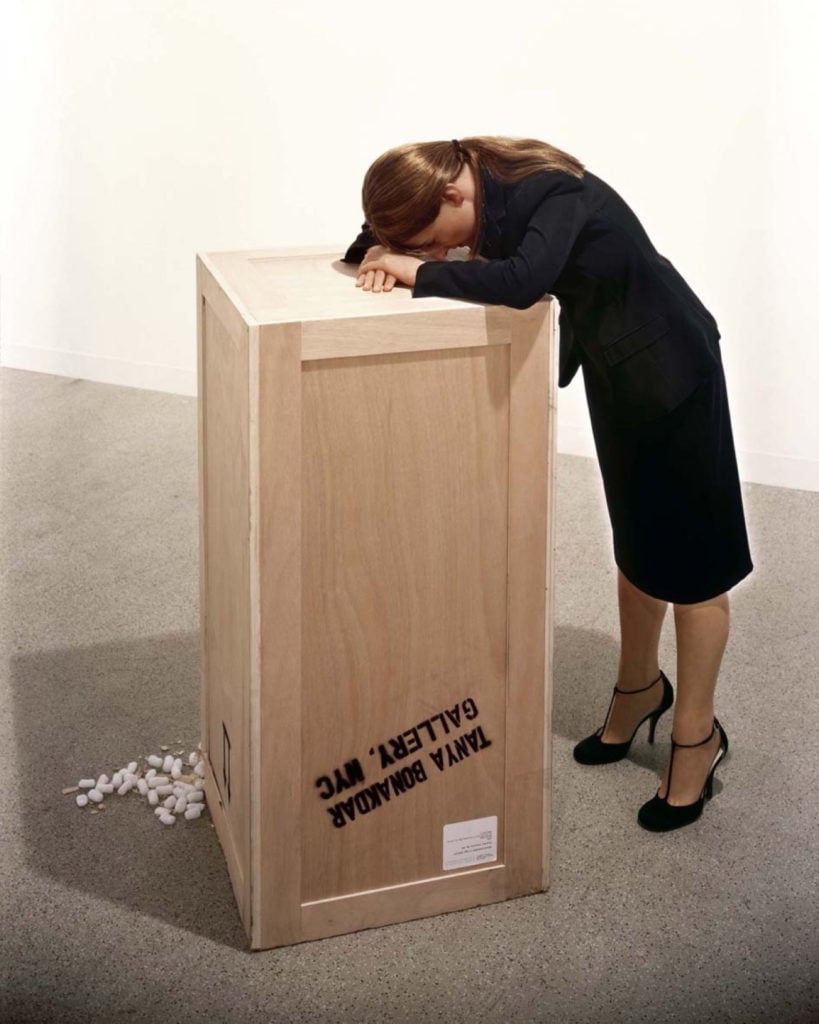
Elmgreen and Dragset, Tanya! Tanya! Tanya! (2004). © Elmgreen & Dragset, courtesy of Perrotin.
Though it’s required by law in New York State for retailers to display the prices of their wares, how many New York City art galleries actually offer a price list? Ask at the front desk and you’ll typically get a cold shoulder.
This creates a highly asymmetrical balance of power favoring the dealer over the prospective buyer, says one fair director, especially if that potential buyer is new enough to the art collecting game not to have a network of friends and colleagues to help her figure out what the prices might be—and what price is fair.
“There’s no transparency on primary-market pricing or curatorial credibility to evaluate new art,” says a fair director. “If I’m a collector and I’ve been vetted by a gallery and then offered a work, I get a price from the gallery but I don’t understand where it fits within the ecosystem of the artists’ peers, and I don’t know what the prices were at the artist’s previous show or what they will be at the show after. I don’t know what’s coming down the pipeline curatorially that might make some career milestones for that artist.
“These extreme asymmetries have led to a lack of confidence in the market, and that has stymied a lot of collectors from committing to new artists,” the fair director continues. “It’s not just the pricing but the bigger picture. If the art world were more transparent, it would be far more beneficial to collectors. I think they would collect a greater diversity of artists.”
8. Women Still Don’t Get a Fair Shot
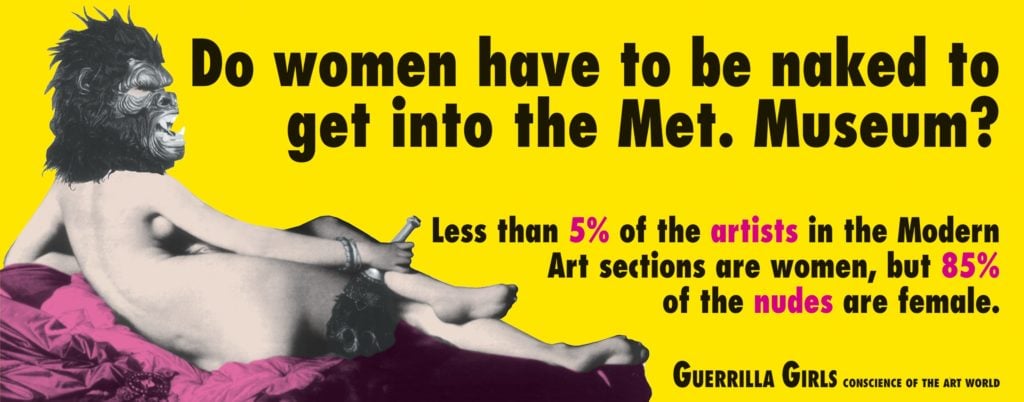
Guerrilla Girls’ Do Women Have to be Naked to Get into the Met. Museum? (ca. 1989). Courtesy of Cooper Hewitt.
The Gorilla Girls’ striking indictment of the Metropolitan Museum of Art in 1989 (see above) came some 18 years after pioneering art historian Linda Nochlin’s 1971 essay “Why Have There Been No Great Women Artists?” In the article, Nochlin pointed out the structural boundaries that block women from achieving the same successes that men do.
Thirty years after the Guerrilla Girls’ outraged question, the situation hasn’t improved much.
The numbers tell a bleak story: according to a recent report by Artnet News and In Other Words, of the nearly $200 billion spent on art at auction since 2008, just $4 billion, or 2 percent, was spent on works by women artists. While galleries may do better in terms of promoting women, their rosters still fall dramatically short of parity: “A 65:35 ratio is repeated over and over—that’s still almost twice as many men as women,” says Micol Hebron, who has studied the data for years.
Another part of the same study devoted to museums found that just 11 percent of acquisitions and 14 percent of exhibitions at 26 prominent American museums were devoted to women artists.
“The Guerrilla Girls,” one artist said, “may never be able to retire.”
9. There Seem to Be No Clear Reasons for the Way Anything Works

Courtesy Wikicommons.
“Why is there only ever one black artist at a time?” asked one black artist in his 40s.
“Why is it that, although performance artists are really hot when they’re young, after that, no one knows who they are for 20 or 30 years? Why is it that if young women artists are doing work involving their bodies, everyone is around for it when they’re young, but then years later, [they say], ‘I can’t believe nobody has shown their work in 20 or 30 years’? Why do museums act as though paying artists is an afterthought, or even fight not to pay artists, when artists are the foundation of institutions? Why are museums always ‘wishing’ they could pay you for your labor? The market wants artists to do the same thing over and over. ‘You should be really expressive, in this same way… for 20 years!’”
Follow artnet News on Facebook:
Want to stay ahead of the art world? Subscribe to our newsletter to get the breaking news, eye-opening interviews, and incisive critical takes that drive the conversation forward.

It looks like you're using an ad blocker, which may make our news articles disappear from your browser.
artnet News relies on advertising revenue, so please disable your ad blocker or whitelist our site.
To do so, simply click the Ad Block icon, usually located on the upper-right corner of your browser. Follow the prompts from there.
SHARE

No comments:
Post a Comment